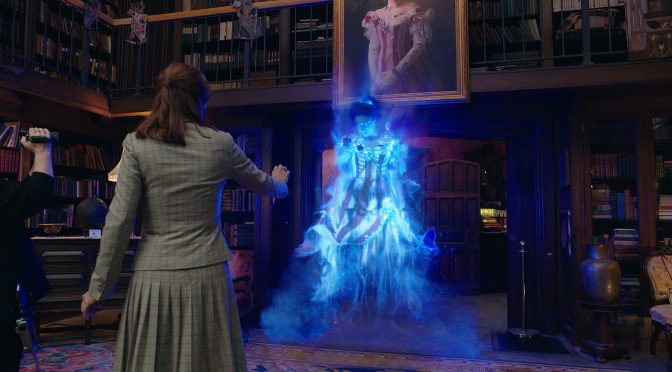Over the years on this blog I’ve said some things I later came to second guess. It’s not so much that I lack confidence but I’m not a person who rejects evidence against my opinion just to soothe my ego (profound as that ego may be). I’ve long felt that writers need to be able to admit when they’re wrong so that they can take criticism and learn from their mistakes. So every once in a while, I have to question previously held opinions and see if maybe they were wrong. Sometimes, I review the opinion with the new evidence, find that the original opinion was right, and move on with my life, and other times I find that I missed something and needed to revise my stance.
One of the opinions that I’ve had to review in the last year was my stance on the 2016 reboot of Ghostbusters. For those who have been long time readers you may know that when the first cast photos were released I wrote that the direction of the film was probably for the best. I argued that Ghostbusters 2 (an “okay” movie) had shown that following the same characters again was probably a bad idea, that no one really wanted to make the third, and that no one was really serious about wanting to see a third either. In my estimation, at the time, a fresh start with a new direction was the way you could revitalize the franchise and that what I was seeing was an effort to breathe new life into an old property. But, over the course of the next year I started to hear things from behind the scenes that made me wonder if I’d missed something.
It got worse as the film released and I came to see the reviews. Though critics were generally positive towards it, the positive reviews were lukewarm. Time and again, I saw positive reviews that said the movie was average – “good” but not “great”. One article I read even stated that being average was a good thing, possibly even better than being a smash hit, because it paved the way for women to make more “okay” movies. Suddenly, thanks to information I’d learned over the year and the arrival of the reviews, I started to have a sinking feeling.
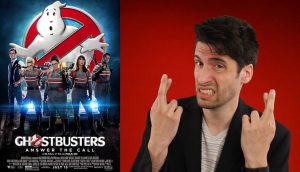
People I knew who were enthusiastic for the film started to lose interest and it just kind of fell off the radar. While some people were still excited about it, the reviews, the box office, and the general energy after release were clear: this wasn’t quite the big deal it should have been. So, I have to admit, I didn’t watch it right away. But now, two years after writing that post and a year after the film hit theaters, I have actually seen it and I have finally come to a conclusion:
The cast was good, but the script might have needed another look…
Breaking Tension

In the months after my original post I started to hear stories of executive politics and meddling behind the scenes that made me wary. Ivan Reitman, director and producer of the first two films, and Dan Aykroyd, perpetually haunted by the ghosts of his past career, had apparently wanted to make Ghostbusters 3 a passing of the torch moment where a new team (including women) were to work with the originals and take up the mantle. Reitman and Aykroyd’s direction was apparently a best of both worlds approach where you could go in that fresh, new direction and still pay respect to the original films by having the remaining cast take on a mentor role to a new generation. I came to find that a lot of people were fond of this idea and it had been floating for some time through the fan community. But Ivan ran afoul of Amy Pascal, a Sony executive known for having a record and reputation best described as…
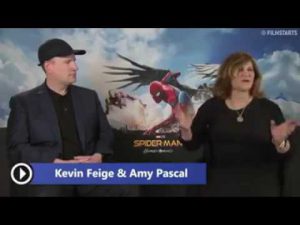
As the Chairperson of Sony Pictures Entertainment’s Motion Pictures and Television divisions during the dreaded Sony e-mail hack, Pascal’s dealings became terribly public for a period of time and a lot of them didn’t look good. Though there was nothing particularly damning, what was clear was that Pascal had been responsible or at least heavily involved with several of Sony’s missteps in recent years – including the meddling that had derailed Amazing Spider-man 2. She was intent on getting an expanded universe of her own (something she’s continuing to try for even after being released by Sony) and was going to get it from Ghostbusters if she couldn’t get it from Spider-man. And, the thing is, Ivan Reitman’s contract stated that he had to have a great deal of creative control with the Ghostbusters franchise. Clearly, this meant he had to go.
It was due to these maneuvers that Paul Feig came onto the scene, and after watching the film I’ve come to realize that the flaws of the film fall on his shoulders as co-writer and director. Though the cast was the center of the ridiculous controversy for so long, they were actually the strongest part of the film in my opinion. The cast, doing their best with the material they had, were responsible for making the film watchable. Every positive review and charming moment I’ve seen can be attributed to them and the problems I saw with the movie myself were beyond their control. Instead, what I found was that Feig’s direction and writing both suffered from a single problem that I think is important for all of us to learn from.
The material wasn’t allowed to breathe, and kind of smothered itself in the process.
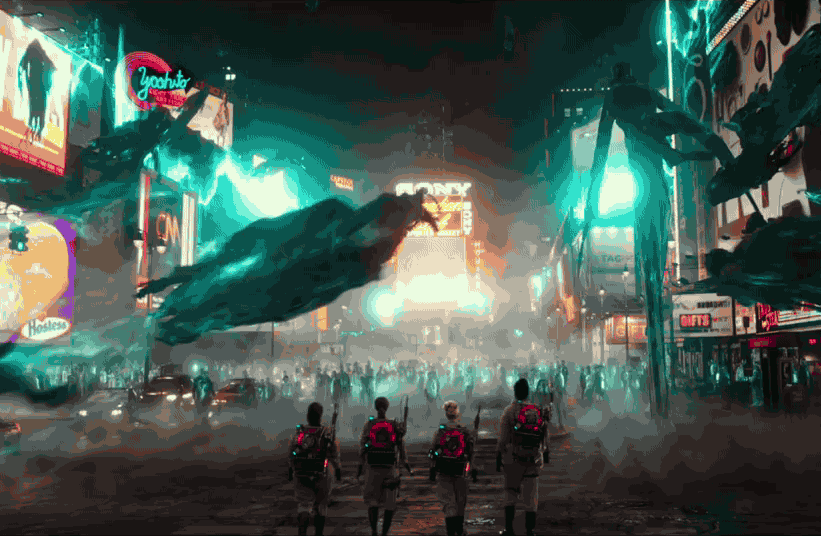
It was something I couldn’t quite put my finger on at first. I laughed a few times, liked the characters for the most part, and wasn’t really put off by the fact it was a reboot with a strange need to remind you of the original. But something was missing and it didn’t really jump out at me until I started to think about those original movies in more depth. The original Ghostbusters, though often identified as a comedy, was a unique creature. It had a kind of humor that was based more in the surreal and in dry reactions to outrageous events (an approach that many spoof movies would do over the years). It was a movie where a man was chased by demonic dog while others were oblivious to what was happening to him. It was a film where a woman was possessed and greeted her date with talk of a prophecy before demonstrating her ability to float. It was the story of a team of oddballs trying to deal with insane events while maintaining their sanity. And, while the new film was trying for similar, the tones they took and their approaches were markedly different – especially in regards to tension.
One common theory for why humans laugh is that it’s an instinctual way we let each other know that everything’s okay. It’s like an “all clear” sign that we all know from birth. According to this theory, it’s a signal that something which could make us feel awkward, uncomfortable, frightened, or upset is actually not the bad thing we expected. This is why people who have been suddenly scared will sometimes have fits of laughter when they realize they’re okay. It’s also why most of the best jokes are the ones that catch you off guard. And it’s definitely why dark humor happens to work even though we’re all so very sure we’re going to hell for laughing at it.
The original Ghostbusters thrived on this concept as the majority of their best moments were rooted in the tense, weird, or just freaky. If you think back on the film, it was often quiet and subdued for long periods of time, allowing that feeling to build for a while before the tension would suddenly break. Sometimes, that tension would break in a bad way, resulting in a mild scare. Other times, that tension would be broken by a one-liner or sight gag that would amuse us as we got that emotional “all clear” sign. Sometimes, it even broke in ways we just could not have expected. After all, this was a film where a dark goddess revealed that the instrument of our destruction would be… a marshmallow man.
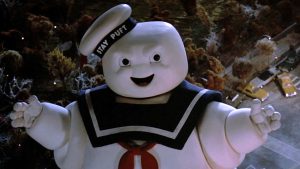
It would be unfair and, as I covered last time, counterproductive for us to expect this reboot to be exactly like the original. However, the problem with the reboot is that you could see it was trying to build that tension from time to time but wouldn’t step back long enough to let it happen. The scenes were always a little “busy” in a way where you never got to fully take in what was happening, and it meant that when the new movie dealt with the surreal and the unusual, it didn’t quite land the way it should have.
The scene where I finally realized this was when they encountered an evil mannequin. Throughout the movie there were times where characters were giving an almost uninterrupted commentary on what was happening in front of them, essentially exposition. And the “evil mannequin” scene, one of the “spookier” scenes in the film, still featured one of them doing it. Though it starts out okay with that same sort of tension and release mentioned before, it released that tension repeatedly in a short period of time before making its way to Patty. Now, the character of Patty has had some criticisms leveled against her over the last couple years, some fair and others not so much, and the actress was treated terribly by the online community (a shame on all of us geeks). But in this one particular scene I felt the way she was approached had detracted from the scene’s potential.

As the other characters were moving through the hallways and back rooms relatively quietly and discovering things along the way, Patty muttered the entire time. It’s understandable, wanting to make the character’s personality stand out, but it kind of broke the mood the rest of the characters had been building. As a result, the scene felt like it didn’t achieve the effect it was going for. Scenes that are based in tension need to have a moment to breathe, a time where the events in question can be processed by the audience before someone or something breaks the tension. But as Patty continued to talk through her thought process, that tension didn’t really manifest, and no musical cues could remedy it. Though you knew something would happen, by her labeling it as a “room full of nightmares”, the anticipation was nullified.
Similar examples can be found throughout the film, but I feel this one scene provides a microcosm to demonstrate just why it didn’t quite soar the way it could have. The cast had potential, the franchise still had potential too, and despite being tied to some executive meddling it felt like the film was allowed to be itself. But, like this scene, the film seemed to struggle with letting things just happen. As a result, while the movie and this scene were decent…
They weren’t quite as good as they could have been.
(I write novels, dabble in screenplays, and tweet from time to time. Sometimes, I may even tweet about stuff I’m watching, but I was smart enough not to tweet about this one. There in would lie the path to madness.)


